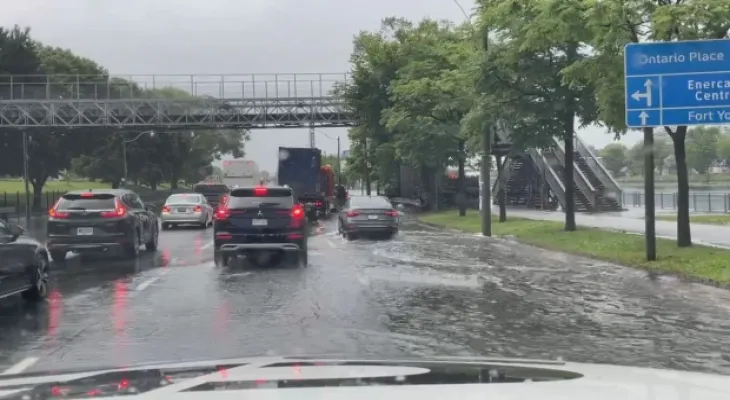Search here
Newspaper
Search here

Arab Canada News
News

Published: July 17, 2024
Canadian homeowners are increasingly adding flood coverage to their insurance policies as extreme weather events become more common, according to the Insurance Bureau of Canada.
After an intense bout of flash floods in southern Ontario on Tuesday, some residents may learn the hard way that their insurance does not cover floods — and will rush to add that optional coverage to their policies for the future.
Rob DeProice, the bureau's director of consumer and industry relations, said, "If you live in a flood-risk area or have experienced a flood before, people may be more aware of what their insurance policy may or may not cover, and the options available to them."
"But if you’ve just moved to the area or if you haven't experienced this before, you may or may not have that coverage."
Heavy rain hit Toronto and the surrounding area on Tuesday, causing major highways and a key transit hub to flood amid rainfall warnings across much of southern Ontario.
DeProice said it is too early to know the extent of the damage, but "we know this was a significant flooding event."
Many are already comparing Tuesday's event to the Toronto flood in July 2013 that forced nearly 80,000 people to evacuate. According to the bureau, the floods from storms in the area caused record rainfall levels.
Just a month ago, catastrophic flooding in Calgary forced nearly 80,000 people to evacuate and claimed five lives.
The bureau said the two events together are costing the insurance industry about $3.1 billion in claims.
DeProice noted that optional flood insurance is becoming more popular among homeowners across Canada, with more insurance companies offering it.
But it hasn’t been an option for very long. In fact, the flood in 2013 prompted the industry to start offering flood coverage primarily, DeProice said.
DeProice stated that severe weather events are becoming more frequent, leading insurance companies to pay much more in claims related to severe weather, whether it’s fire, flood, wind, or hail.
“If we think back about 15 years ago, the insurance industry was paying an average of about $700 million a year for severe weather events.”
In 2022 and 2023, the industry paid more than $3 billion annually for claims related to severe weather.
DeProice said this is one of the reasons the industry is working with the government to develop a national flood insurance program, adding that homeowners in high-risk areas may not be able to access flood insurance at all, or it may be much more expensive.
The program aims to ensure that all homeowners can access affordable flood insurance regardless of their risk, according to the bureau.
When it comes to homeowners insurance, optional flood coverage covers specific types of damage, such as that caused by lake overflow or ponds or rivers, according to IBC.
The bureau noted that water damage in the basement due to a sewer backup does not offer specific optional coverage unless you purchase specific optional coverage.
DeProice added that if you have comprehensive car insurance, you are likely covered for floods.
If there is a power outage, the contents of the fridge and freezer may be covered, while in some cases, homeowners who cannot stay in their homes due to insured damage may be eligible for additional living expenses.
Daniel Evans, an insurance expert at STEMSDOTCA and a licensed insurance broker, stated that some Ontario residents may not have adequate coverage for their area and risk level.
He said in a statement, "As weather patterns become more extreme and flooding becomes more severe, many homeowners will need to pay close attention to their insurance policies to ensure they are covered for what they need."
STEMBOTCA reported that recent data on homeowners insurance quotes showed a 68 percent increase in quotes adding water endorsements in June 2024 compared to the previous year.
DeProice noted that improving flood resilience in your home, such as installing a sump pump, can make flood insurance cheaper and reduce damage costs from future events.
If your home or car suffers damage from floods, IBC recommends starting to assess and document the damage with detailed notes and taking photos as soon as it is safe to do so. Gather any evidence of purchases, warranties, and receipts if possible.
Afterward, contact your insurance representative or the claims department of your company to report the damage and find out what your coverage includes.
Additionally, keep receipts for additional living expenses if you are displaced, the bureau said, and receipts for cleaning in your home.
Comments